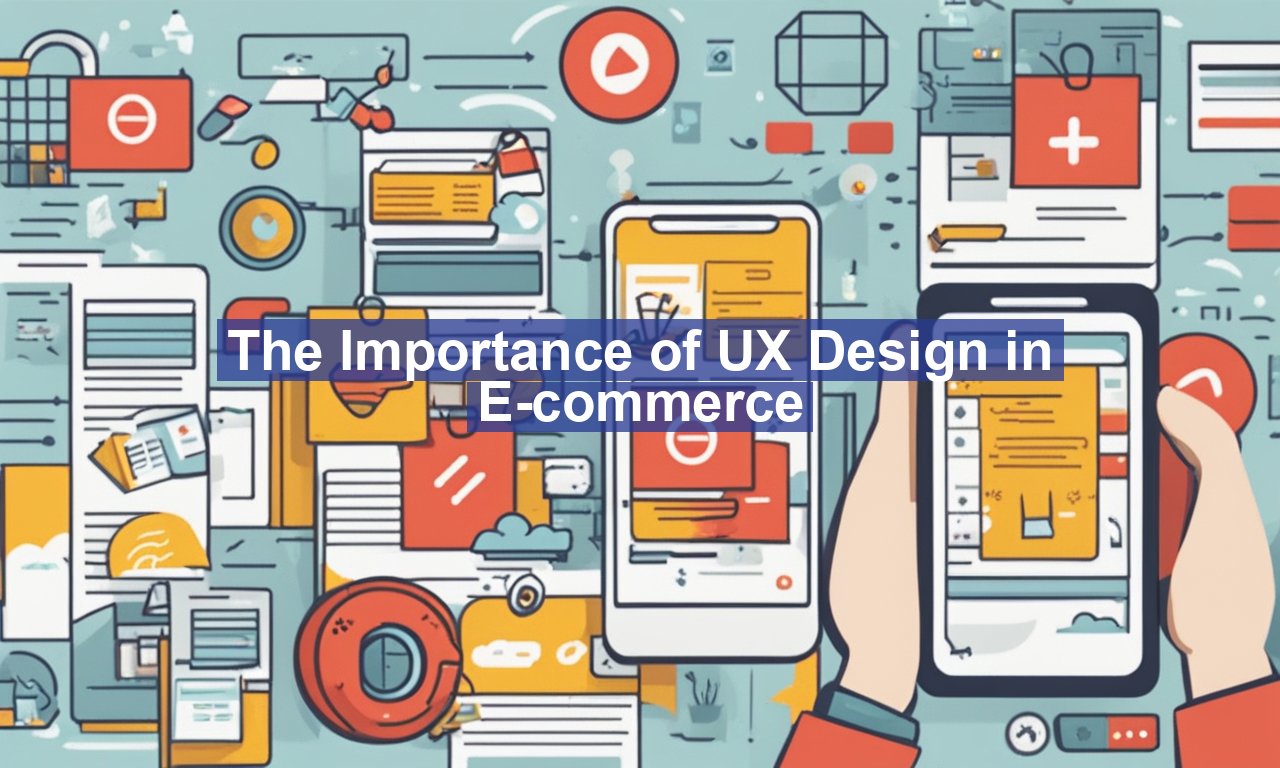The importance of UX design in E-commerce has revolutionized the way we shop, but it’s the nuances of User Experience (UX) design that can make or break an online store. Ever abandoned a shopping cart because the website was just too frustrating to navigate? You’re not alone, and this is where UX design plays a pivotal role.
A well-designed UX can enhance customer satisfaction, boost conversion rates, and significantly impact an e-commerce site’s success. Join us as we dive into why UX design is more than just a buzzword in the e-commerce industry.
The Importance of UX Design in E-commerce of
Role
At its core, User Experience Design focuses on creating a seamless and enjoyable experience for the users. In e-commerce, this means designing interfaces that are not only visually pleasing but also intuitive and easy to interact with. As online competition surges, brands must prioritize UX to differentiate themselves and build customer loyalty.
Why UX Design Matters
Picture yourself walking into a store where everything is scattered and you’re unable to find what you need. Frustrating, right? The same principal applies online. An e-commerce platform with a poor UX can lead to:
- High Bounce Rates: If users struggle to find what they’re looking for, they’ll leave.
- Low Conversion Rates: Confusing navigation and poor design can deter even the most interested buyers.
- Negative Brand Perception: A bad experience reflects poorly on the brand, making consumers hesitant to return or recommend.
According to a Forrester study, improved UX design can boost conversion rates by up to 400%. This makes it an essential component for e-commerce success.
Key Elements of Effective UX Design
Simplicity and Clarity
Less is more. A cluttered webpage can be overwhelming, leading to a drop in interest. That’s why it’s crucial to maintain simplicity in design, ensuring that the most important features stand out. This involves clear navigation paths, an easily accessible search function, and intuitive product placement.
Responsive Design
With an ever-growing number of consumers accessing e-commerce sites through mobile devices, having a responsive design is no longer optional. A site must adjust seamlessly across different devices and screen sizes to offer a consistent experience. Google rewards mobile-friendly websites with better rankings, making this not just user-centric, but SEO-friendly too!
Fast Loading Times
We’ve all abandoned a website that just couldn’t load fast enough. Loading speed is critical, as every second counts. A Google research indicates that the probability of a bounce increases by 32% when a page load time goes from 1 second to 3 seconds. It’s vital for e-commerce sites to invest in optimizing load times to keep customers engaged and happy.
Effective Call to Actions (CTAs)
CTAs guide users on what to do next, making them crucial in the buyer’s journey. Crafting effective CTAs requires understanding your customer’s needs and desires. Ensure they’re visible, concise, and compelling to drive users towards conversion.
Benefits of Prioritizing UX Design
Increased Customer Satisfaction
A well-designed UX keeps customers happy, encouraging them to return and make repeat purchases. It’s all about fostering positive emotions and ease of use when interacting with your site.
Boosted Conversion Rates
By streamlining the purchasing path and reducing friction, UX design significantly improves conversion rates. When users find it easy to navigate and purchase from your site, they’re more likely to complete their transactions.
Enhanced Brand Loyalty
Positive user experiences create loyal customers. People are more likely to become repeat buyers or advocates of brands that provide them with seamless online shopping experiences. By investing in UX design, e-commerce sites can build strong relationships and trust with their user base.
The Future of UX Design in E-commerce
As technology evolves, so too does the scope of the importance of UX design in e-commerce. The future is all about personalization, AI-driven recommendations, and voice commerce. Staying ahead of these trends will be crucial in crafting experiences that are not just functional but also delightful. Those who prioritize UX design now will likely be the leaders in the next wave of transformative retail experiences.
The takeaway: investing in UX design isn’t a luxury, it’s a necessity for any e-commerce business looking to thrive in today’s digital marketplace. Focus on providing an intuitive, responsive, and delightful experience, and you’ll likely see dividends in customer loyalty and conversion success.


